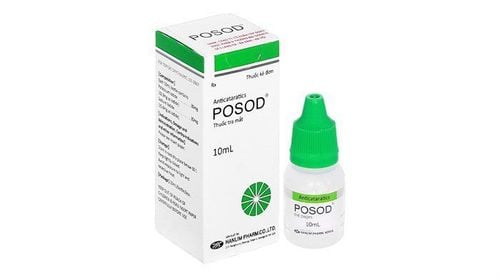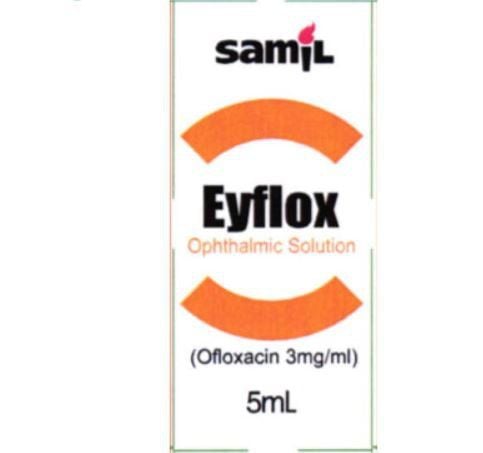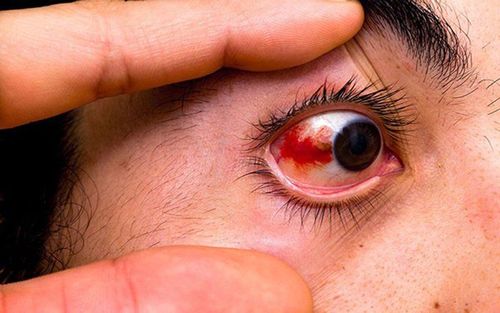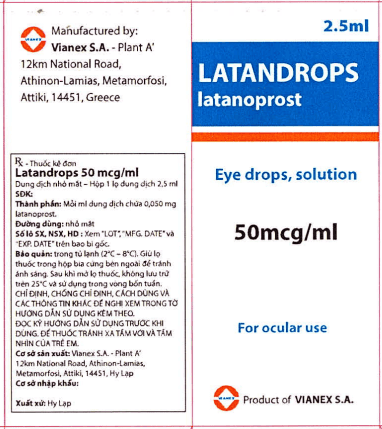This is an automatically translated article.
The article was professionally consulted by Specialist Doctor II Nguyen Thai Hung - Department of Medical Examination & Internal Medicine - Vinmec Danang International Hospital. Specialist II Nguyen Thai Hung has 13 years of experience as a doctor treating eye diseases.Statistical studies show that the incidence of refractive errors is increasing rapidly in Vietnam. Among them, presbyopia is a common vision problem. Farsightedness is not only seen in adults but also children can still suffer, so the need for eye surgery to treat presbyopia is also increasing. So can farsightedness be operated and when should surgery?
1. What is farsightedness?
Farsightedness (Hyperopia, Hypermetropia, Farsightedness) is a refractive error in which the patient can see distant objects very well, but has difficulty focusing on near objects. Farsightedness is a refractive error, when the eye is at rest, parallel incident light rays entering the eye will focus behind the retina. In order to see better, the patient's eyes must adjust to bring the image from the back to the right retina.In some cases of severe farsightedness, the person can only see things at a great distance. Farsightedness can run in families. Symptoms of this defect are quite similar to presbyopia in the elderly.
2. Is farsightedness curable?
Farsightedness can be treated temporarily by wearing glasses or contact lenses to change the focus point of light rays entering the eye, helping to improve vision for the patient. Wearing glasses helps correct presbyopia by reducing the curvature of the cornea, but this method is only temporary, because removing the patient will restore the original condition.To treat refractive errors completely, it is necessary to use surgical methods. Although most refractive surgery is used to treat nearsightedness, in fact, this surgery can also be used for farsightedness.
Surgical treatments that correct the curvature of the cornea by reshaping include:
LASIK (Laser-assisted in-situ keratomileusis) surgery: A procedure in which a doctor uses a thin piece of paper. A concave blade that cuts into the patient's cornea, then uses an excimer laser to remove layers from the center of the cornea to correct the curvature of the cornea. An excimer laser is different from a laser because it does not generate heat. Once done, the thin flap of the cornea is repositioned; LASEK (Laser-assisted subepithelial keratectomy) surgery: Instead of creating a flap in the cornea, the doctor creates a cover consisting of only the thin protective sheath of the cornea, and then uses an excimer laser to reshape the layers. outside of the cornea and slope the curve and then reposition the epithelium flap. Patients may wear a contact lens to protect their eyes for several days after the procedure; PRK (Photorefractive keratectomy): Similar to LASEK, except that the epithelium is surgically removed, it will grow naturally, conforming to the new shape of the cornea. Patients may have to wear a bandage contact lens for a few days after presbyopia surgery; CK (Conductive keratoplasty) surgery: Uses radiofrequency energy to apply heat to areas around the cornea, giving the same effect as thermal plastic wrap. The degree of change in the curvature of the cornea depends on the number and spacing of the spots as well as how well the cornea heals after treatment. The results of CK surgery are not permanent.

3. When should surgery for presbyopia?
Currently, excimer laser surgery (lasik method) is considered the most effective. Depending on the degree of farsightedness, the doctor will use laser energy to change the optical power of the cornea. Surgery can be indicated for cases of farsightedness from +1 to +10 D. Patients who want to operate must be over 18 years old, have stable farsightedness.Contraindicated eye surgery in cases of acute or chronic eye disease: conjunctivitis, keratitis, uveitis, glaucoma, cone cornea or patients with existing pathologies systemic effects on surgery, pregnant women or during lactation.
4. Can congenital farsightedness be cured?
Farsightedness is a disease in which the focusing power of the eye is reduced, requiring additional converging glasses to see better. Presbyopia over 6 degrees is considered severe, the ability to wear glasses for life, can cause strabismus, need to pay attention to prevent amblyopia in both eyes.Surgical methods only help patients with congenital farsightedness or severe presbyopia without glasses, but do not solve the root cause. Up to 90% of patients do not need to wear glasses anymore after laser surgery to treat refractive errors, including presbyopia.
Please dial HOTLINE for more information or register for an appointment HERE. Download MyVinmec app to make appointments faster and to manage your bookings easily.














